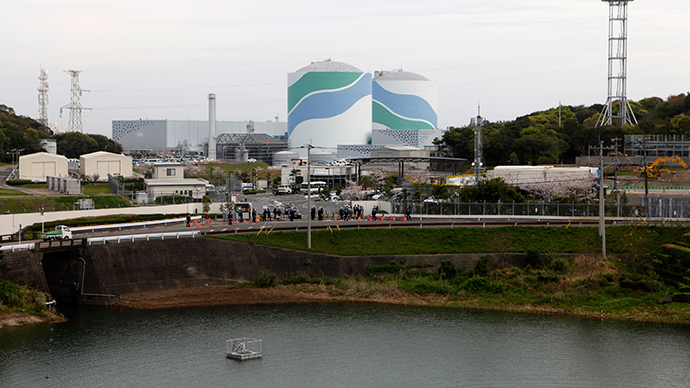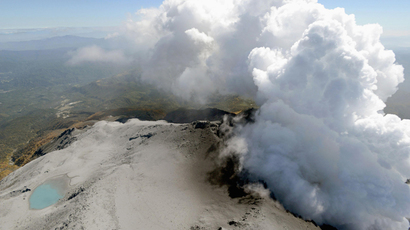Japanese governor approves 1st nuclear power restart since Fukushima disaster

Two reactors at Japan’s Sendai nuclear power plant received approval to be restarted by the governor and assembly for Kagoshima prefecture. It will be the first such restart following Japan’s post-Fukushima decision to close all nuclear plants nationwide.
In a vote Friday, 38 of 47 members of Kagoshima's prefectural assembly voted for the restart, Reuters reported.
Kagoshima’s pro-nuclear power governor Yuichiro Ito also backed the decision.
READ MORE: Japan to reopen 1st nuclear plant
after Fukushima disaster - despite volcano risks
"I decided that there was no choice but to approve the resumption of the Sendai plant, after comprehensively taking into account various factors surrounding the situation," the Asahi Shimbun daily cited the governor as telling a news conference Friday.
The move was the final step necessary to bring the two reactors – located 600 miles southwest of Tokyo on Kyushu Island – back online in accordance with the country’s new nuclear safety regulations, which were introduced in July 2013.
READ MORE: Active volcanoes near Japan nuclear reactor are safety threat – panel
The restart push also received an important endorsement from council members for the town of Satsumasendai, where the reactors are located. For Satsumasendai, bringing them back online will also restart the flow of state subsidies. Between 1974 and 2013, the city received over ¥27 billion ($23.3 million) in central government subsidies for hosting the plant, the Japan Times reported.

But some towns and villages within a 30 kilometer radius of the plant remain skeptical over the restart, the Japan Times said. They have demanded that they too be consulted prior to the restart, in line with promises made by both the central government and Kyushu Electric Power Company, which owns and operates the Sendai plant, the newspaper said.
During Friday's vote, protesters vocally made their opposition to the plan to bring the reactors back online.
Flash mob protest in Kagoshima assembly against Sendai nuke plant restart vote. #川内原発pic.twitter.com/6iw7Wpguqc
— Chris Meyers (@ChrisDMeyers) November 7, 2014
In March, approximately 6,000 anti-nuclear activists took to the streets in Kagoshima to protest a decision by nuclear regulators to fast-track safety reviews of the two reactors at the Sendai Plant. Smaller scale protests have since been held in the region, with Fukushima evacuees among their ranks.
Kagoshima citizens staging a sit-in protest against the restart of the Sendai nuclear power plant (Nov6/Kagoshima) pic.twitter.com/0qlgYVoKC2
— Japan Press Weekly (@JapanPress_wky) November 7, 2014
Many in the anti-nuclear movement fear the Sendai plant will trigger a “domino effect,” with dozens of other nuclear plants coming back online across Japan. There were also warnings that volcanoes in the area posed an immediate threat to the Sendai plant, a threat nuclear regulators dismissed.
Prior to the March 2011 earthquake and tsunami which triggered the Fukushima disaster, roughly 30 percent of Japan’s power came from atomic power.
The disaster spurred a string of plant closures, with the last working reactor in the country shutting down in September 2013.
Following the disaster, Prime Minister Shinzo Abe shut down all 48 of the country’s nuclear reactors. The final working plant in the country went offline in September 2013.
Abe has subsequently lobbied for a nuclear restart, however, arguing that Japan’s current dependence on fossil fuels is economically unsustainable. In September, he said the country would not restart shuttered nuclear power plants "unless safety is restored 100 percent.”
His comments came nearly two weeks after Japan’s Nuclear Regulation Authority approved the restart of the Sendai reactors.
And while all the hurdles have been cleared to resume operations at Sendai, the restart will likely be held back until 2015, with the country’s nuclear safety watchdog overseeing operational and emergency regulation changes, as well as plans for construction at the site.














